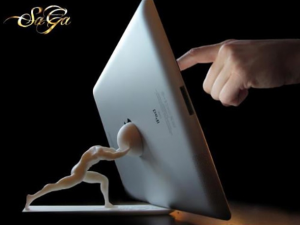
The concept of using computer-guided additive technology to build items layer by layer has been around since the 1980s, but the technology is still in its infancy. Chuck Hull of 3D Systems Corp. created the first 3D printer in 1984. The first application was prototyping. At the time, there were predictions that the technology eventually would be used in mass production and distributed manufacturing, but the predictions were made with a caveat: it would take time. Some of those production roles went into practical use in the 2010s, and the technology is gradually creeping into all sorts of applications.
Michelangelo would be astounded. The technique is just the opposite of his famed 1500s approach to sculpture: He posited that inside every block of stone there was a figure waiting to be found. 3D printing does it in reverse, building from the inside out, adding layer by layer of material in different shapes as the computer dictates. Widespread use of 3D printing could replace processes now in use, such as the cutting and drilling (subtractive) methods used in traditional machining.
Creation of a Computer-Assisted Design (CAD) for the desired product starts the process. The 3D scanner then translates the model into digital, three-dimensional measurements. The computer then directs layers of the material being used, conforming to the digital model. Layers are fused by heating, curing, centering, lamination or photo polymerization into a single object.
Sales of additive manufacturing equipment have skyrocketed since the turn of the century and prices are dropping as more companies pick up the technology. Wohlers Associates, a consultant, reported that the market generated $2.2 billion worldwide in 2012, an increase of 29 percent over 2011. The concept is gradually moving into architecture, construction, industrial design, automotive, aerospace, military, medical, GPS systems, foods and other applications.
In some applications, 3D is used alongside traditional subtractive processes, combined by the computer to make the best use of both approaches.
The 3D printing advances are good news for consumers, since the ability to mass produce items at less cost will reduce the price tag at the point of purchase. Use of 3D printers may offset capital costs for the producers and ideally the savings will be passed along to consumers. The process of getting products to the market has been complicated and slowed, the experts say, by a flood of complex patent issues. Some potential users have been reluctant to dive into the competition because they fear lawsuits, they conjecture.
Even so, as 2014 got into gear, at least 22 commercial applications of the technology in fields as diverse as construction, defense and foods were established. Obviously, the story of 3D Printing in modern life is in the early stages of Chapter One. Look for the announcement of new advances at an escalating rate.
It is conceivable that 3D desktop printers will join the computer as standard home equipment. Amazon advertises an 11-pound printer that fabricates objects using thermoplastic filament purchased separately. Finished products must stay within the size guidelines — 4.5 inches cubed, in this case. The price for this version is just below $600. But the potential could make every owner of a 3D printer an inventor, sculptor or chef, depending on objectives.
There is a downside. A 3D printer is capable of manufacturing items — think guns — that could be dangerous in the wrong hands. In 2013, a self-styled anarchist designed, created and printed a plastic gun using the technology. He shared the information with some 1000,000 interested individuals via the Internet before the U.S. government closed down the site. A Japanese man was arrested this year for possession of five 3D printed guns. What other illegal or dangerous uses could be made of the technology almost surely will be part of the ongoing story.